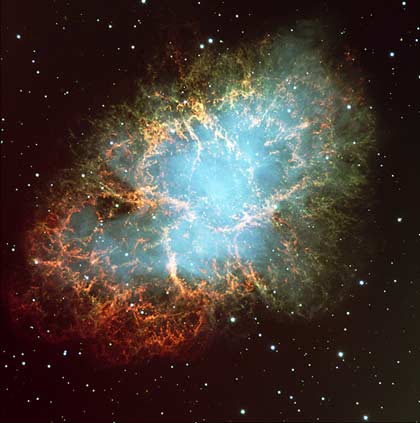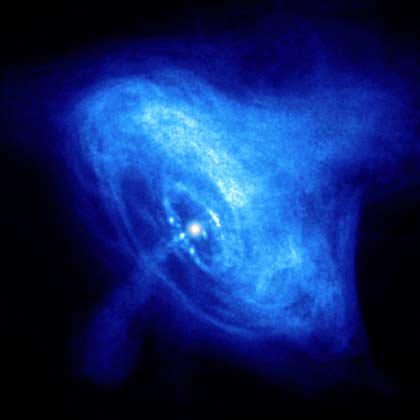According to records from a Chinese historical text “The Essentials of the Song Dynasty”, on the morning of July 4, 1054, a very bright “guest star” appeared near the Tian Guan (Heavenly Gate) of the Taurus constellation. For the first 23 days, its brightness exceeded that of Venus, and it was visible even during the day. Later, this star gradually dimmed, completely fading by April 6, 1056. This is the first meticulous record in the world of a supernova explosion. The Crab Nebula is the remnant of this massive explosion of the supernova.
In the West, the Crab Nebula was discovered by British astronomy enthusiasts in 1731. In 1884, Lord Ross (UK) noted that the shape of this nebula resembled a large crab crawling across the sky, thus naming it the Crab Nebula. This quirky name has persisted to this day.

The Crab Nebula (Photo: astroa.physics)
After its discovery, the Crab Nebula has consistently captured the attention of astronomers. In 1921, Dunken, an American astronomer, compared two photographs of the nebula taken 12 years apart and observed that the nebula was continuously expanding. In 1928, American astronomers measured the expansion speed of the Crab Nebula to be 1,100 km/s. Subsequently, many astronomers confirmed that the Crab Nebula is the gas cloud created by the explosion of the supernova in July 1054.
The temperature of the Crab Nebula is not as hot as the Sun, but its radiation is extremely strong, including significant sources of X-rays, radio waves, visible light, and gamma rays. It truly is a “cosmic radio station” of great power. Where does this radiation energy come from? In 1968, astronomers discovered a peculiar “pearl” from the “great belly” of the Crab Nebula, which is a neutron star. This star has a diameter of less than 20 km but weighs as much as the Sun. It possesses an extremely strong magnetic field, with a surface temperature reaching 10 million degrees Celsius and internal temperatures soaring to hundreds of millions of degrees Celsius. Its rotation speed is 30 revolutions per second. The pulses emitted are periodic, allowing Earth to capture its “electromagnetic nectar”. Therefore, the neutron star is also known as a pulsar.

X-rays in the Crab Nebula (Photo: chandra.harvard)





















































